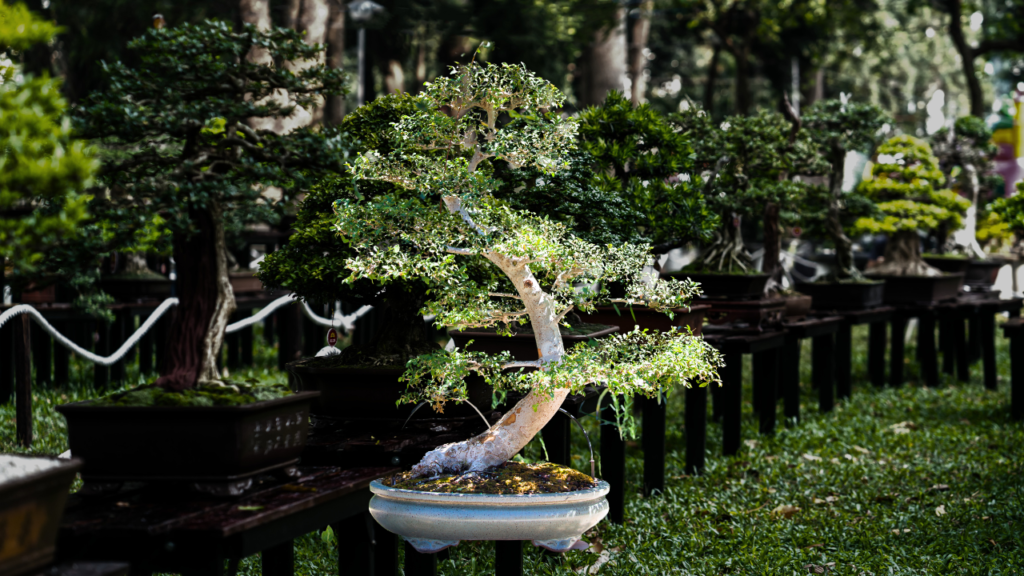Chinese Elm (Ulmus parvifolia) and Japanese Elm (Zelkova serrata) are among the most popular and versatile species for bonsai cultivation. Their fine branching, attractive bark, and adaptability to various styles make them favorites for both beginners and seasoned bonsai enthusiasts. Here’s a detailed care guide tailored for these elm species:
| Elm Bonsai Quick Reference | ||
|---|---|---|
| Attribute | Chinese Elm | Japanese Elm |
| 🌾Plant Type | Deciduous tree | Deciduous tree |
| 📏Mature Size | Up to 80 feet (25 meters) in natural habitat | Up to 100 feet (30 meters) in natural habitat |
| ☀️Sun Exposure | Full sun and/or partial shade | Full sun during growing season or semi-shade during hottest weeks |
| ✂️Pruning | Timed well to ensure abundant flowering | Timed well to ensure abundant flowering |
| 🍂Leaf Characteristics | Small leaves suitable for bonsai | Simple and ovate to oblong-ovate with serrated margins |
| ❄️Hardiness | Varies depending on region of origin | Should be protected from frost, especially in shallow bonsai containers |
| 🌎Native Area | China and south-east Asia | Japan, Korea, and Taiwan |
1. Positioning and Light:
- Sunlight: Both Chinese and Japanese Elms thrive in full to partial sunlight. They can tolerate direct sunlight but prefer a few hours of shade during the hottest part of the day.
- Indoor vs. Outdoor: While they can be grown indoors, these elms flourish when kept outside, benefiting from natural light and seasonal changes.
2. Watering:
- Frequency: Elms prefer consistent moisture. Water when the top layer of soil starts to feel dry. Avoid letting the soil dry out completely or become waterlogged.
- Method: Use a watering can with a fine nozzle to ensure even watering, allowing excess water to drain from the pot.
3. Humidity:
- These elms appreciate moderate humidity. If you’re keeping them indoors, especially during winter when indoor air can be dry, consider using a humidity tray or occasionally misting the foliage.
4. Soil and Fertilizing:
- Soil: A well-draining soil mix is essential. A combination of akadama, organic compost, and fine grit or pumice is ideal.
- Fertilizing: Feed every two weeks during the growing season (spring to early autumn) with a balanced liquid bonsai fertilizer. Reduce to once a month in winter.
5. Pruning and Shaping:
- Pruning: Regular pruning helps in maintaining the tree’s shape and promoting denser foliage. Trim back new growth to shape the tree and remove any unwanted or dead branches.
- Wiring: Both species respond well to wiring, allowing for intricate shaping. It’s best to wire when the tree is actively growing, but always monitor to ensure the wire doesn’t cut into the bark.
6. Repotting:
- Young elms benefit from repotting every 2 years, while mature trees can be repotted every 3-4 years. Late winter to early spring, before new growth starts, is the best time.
- Gently trim the outer roots during repotting to encourage a healthy root system.
7. Pests and Diseases:
- Elms can be susceptible to aphids, spider mites, and fungal diseases. Regularly inspect your tree and treat any issues promptly using insecticidal soap or a suitable fungicide.
8. Winter Care:
- Chinese Elms are more cold-hardy than Japanese Elms. While Chinese Elms can tolerate light frost, it’s best to protect both species from extreme cold. Consider moving them to a cold frame or sheltered spot during harsh winter months.
9. Recognizing the Two Species:
- Chinese Elm (Ulmus parvifolia): Recognized by its mottled bark, which sheds in patches, revealing a lighter underbark. The leaves are small, glossy, and dark green.
- Japanese Elm (Zelkova serrata): Features smooth bark and serrated leaf edges. The leaves turn to a vibrant orange-red in autumn.
Bonsai Care Essentials
Conclusion:
Chinese and Japanese Elm bonsai trees are a blend of beauty and resilience. Their adaptability and graceful appearance make them a joy to cultivate. With the right care, these elms will reward you with a stunning display of nature’s artistry, capturing the essence of the changing seasons.
